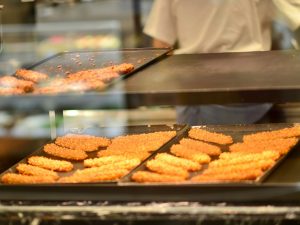How to Choose the Right Food Scale for Accurate Portioning
The right food scale can make a big difference when it comes to portioning your meals. Accurately measuring your food portions can help you maintain a healthy diet and achieve your fitness goals. With so many options available in the market, it can be overwhelming to choose the right food scale. In this article, we will guide you on how to choose the right food scale for accurate portioning.
What is a Food Scale and Why Do You Need One?
A food scale is a handy kitchen tool used to accurately measure the weight of food items. It works by converting the weight of an object into mass and displaying it in a unit of measurement, such as grams, ounces, pounds, or kilograms. A food scale is essential for precise portioning, especially if you are following a strict diet or trying to manage your calorie intake.
Factors to Consider When Choosing a Food Scale
Type of Food Scale
There are two main types of food scales – digital and analog. Digital food scales are more precise and easy to read, while analog food scales have a dial or needle that displays the weight. Digital scales are more popular, especially for portioning food items, as they are more accurate and user-friendly. Analog scales, on the other hand, may require calibration and can be affected by temperature changes.
Accuracy and Precision
Accuracy and precision are crucial when it comes to measuring food portions. You want a food scale that can give you an accurate reading, down to the gram or ounce. Look for a food scale with high precision and a measurement increment of 1 gram or 0.1 ounce.
Weight Capacity
Consider the weight capacity of the food scale before purchasing it. Some food scales have a maximum weight capacity of 5lbs, while others can go up to 11lbs or more. If you plan on measuring larger quantities of food, opt for a food scale with a higher weight capacity.
Units of Measurement
Make sure the food scale offers units of measurement that you are familiar with and can easily convert. Some food scales can measure in both metric and imperial units, giving you more flexibility in your portioning. Also, check if the food scale allows you to switch between units of measurement easily.
Size and Design
The size and design of the food scale matter, especially if you have limited kitchen counter space. Look for a food scale that is compact and easy to store after use. The design should also be user-friendly and easy to clean.
Additional Features
Some food scales come with extra features, such as a tare function, automatic shut-off, or a built-in timer. The tare function allows you to deduct the weight of the plate or container, giving you the accurate weight of the food item. An automatic shut-off helps conserve battery life, and a built-in timer can be handy for timing your cooking or baking.
Conclusion
Choosing the right food scale can make all the difference when it comes to accurately portioning your meals. Take into consideration the type of food scale, accuracy and precision, weight capacity, units of measurement, size and design, and additional features before making your purchase. Investing in a good food scale will not only help you with portioning but also make your cooking and baking a lot easier.
Remember to use the food scale as a tool to assist you in achieving your health and fitness goals and not as a means to restrict yourself. A balanced and mindful approach to eating is key to a healthy lifestyle.











